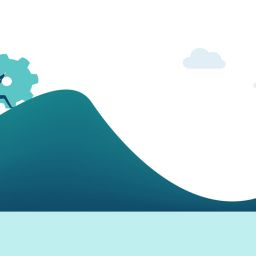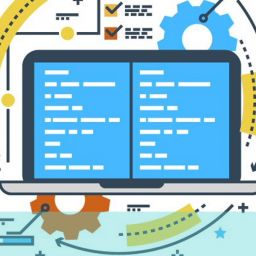
You don’t have to be a genius to know your users are living, breathing, evolving, and growing-all-the-time humans. What they want and need one week could be something very different in the next. To keep up with every step forward surrounding the technology, culture, and requirements they demand, you’ve got to stay up to date with every movement, application, and change in their world. Predicting or understanding what your user needs is far better left to data analysis than peering into a crystal ball. And that’s where continuous research comes in.
You might be thinking that, as a UX research team, you’ve been operating a continuous research practice for years; you’ve been monitoring your analytics and other resources for new user insights to spot the pain points and weaknesses of your pages, functions, and practices, but, and here’s the key difference, you probably haven’t been doing it with the efficiency, regularity, and organisation to get the best from the practice that continuous research findings deliver. And you almost certainly haven’t been presenting your findings in a way that gets the most from them, in the simplest way possible.
What makes continuous research different to traditional UX research?
As the name suggests, continuous research (also known as continuous user research or continuous UX research) is an always-on mindset. Its beauty, however, is that it isn’t a 24/7 job or practice but a scheduled weekly effort that fits neatly around your other tasks.
Traditional UX research tends to lend itself to lengthy studies with a specific project based on defined goals. Whether evaluative or generative, qualitative or quantitative, each study is based on shareholder and user needs and goals.
Continuous research, however, allows for sustained monitoring at every point of the product lifecycle, regularly monitoring for changes or poor performers from easily accessible resources. User analytics, customer interactions, heatmaps, and more reveal hidden truths about where a product is underperforming, delivering actionable insights for our product teams.
Unlike much traditional UX research, continuous research is proactive, not reactive. Its true beauty is how its organisation keeps it fresh and attainable. And it doesn’t impact your working week anywhere near as much as you’d think.
It’s innovative in that it provides weekly product and user insights and shares them with everyone in your organisation. This regularly impacts performance—in real-time—and allows incremental, frequent updates, navigating issues before they get a chance to grow into something more serious.
What makes continuous research different to what you’ve been doing already?
Let’s get into the beauty of what makes continuous research different.
Schedules and templates, speed and efficiency.
What does a continuous UX research schedule look like?
As its name suggests, continuous research needs to be ongoing, but it doesn’t have to be all of the time.
It’s about creating weekly rituals we know we can stick to, providing a flow of steady insights and continuous discovery we can report in bite-sized chunks instead of long-winded, 100-page reports.
Many essential research insights can be accessed from our desks; others require user insights that can only come from direct contact. With a little organisation, you can schedule a handful of user interviews each week, set time aside to monitor the analytics, read product surveys, reviews, and other feedback, investigate the issues your customer care team regularly responds to, and look for the patterns and pain points that are easily fixed or demand deeper understanding and investigation.
It sounds like a lot, but when done well, can be optimised to take only a few hours a week. Spread them out, and you’ll barely notice they’re there.
The trick is to block them off in your diary at specific times and stick to your new schedule.
Our brains work far better on schedules than discipline, so carrying out your analytics research, let’s say, on a Tuesday, and checking in with your sales and support data on Thursdays for half an hour each (first thing in the morning, immediately after lunch, or for the last hour of your day) will ensure you give it the focus it needs, and it will continue indefinitely. Pick another suitable slot to carry out repeatable user testing, another to write, review, and send surveys and questionnaires, and another slot to analyse the results, and all of these twenty-minute to one-hour blocks add up to truly valuable research activities in far less time than you expect.
To go one step further, a shared schedule allows other team members to monitor your continuous approach. Where your UX designers or product managers need specific answers (resulting from your reports), they can request specific topics for forthcoming weeks. Better still, the entire organisation can be provided with a sign-up sheet so they can conduct interviews and studies themselves, using pre-designed template instructions and result sheets to share their findings.
Templates make your research projects and studies more efficient
Just as it is with traditional UX research, creating test materials is paramount. User research can be shared among teams with templates and training materials informing them of the necessary research skills and cataloguing results in a format everyone understands. Anyone on your product team can conduct customer interviews and other research activities with the correct guidance; they don’t have to be research specialists. Your specialists are far better utilised digging into deeper intricacies of your research operations.
Automating participant recruiting or ensuring you have a pool ready to pull from takes another load out of your schedule. Setting up a ready-to-go selection of ideal participants and users and automating activities wherever possible increases efficiency and leaves you more time for essential work.
Sharing study materials, results, and reports should always be hosted on a research repository with all your other dedicated studies, usability tests, and available resources.
Speed and efficiency of continuous UX research
Traditional research has steadily evolved to provide faster, more efficient methods, from which continuous research has drawn and benefitted. Agile methods have introduced research activities based on sprints that uncover opportunities and answer questions quicker than their longer-winded counterparts.
While agile research is typically product-focused, continuous research can be thought to be outcome-orientated based on user and customer behaviour. So, as agile nudges research activities away from a project mindset and towards product discovery and development, continuous research takes it a step further.
How to conduct continuous research
Be moveable with your goals
As with other research activities, you need clear ideas about your goals. The difference with continuous research is that your goals will evolve and change depending on the data. What your research activities uncover will give you key considerations as to what your product team needs to understand to resolve your latest issues.
Consider your ever-evolving user personas
Just as the user needs change over time, so could your ideal user persona. UX research is about understanding customer behaviour, feelings, motivations, and needs. Continuous user research needs to be as adaptable as the focus it uncovers, including the information about its users.
Creating a continuous research plan
Your plan will include the research methods available and how you’ll analyse and report the data—including qualitative methods such as interviews, surveys, usability testing, product testing, etc., and the quantitative methods monitoring analytics and other numerically defined resources. As discussed in the scheduling section, your research activities will happen at the same times to create a weekly rhythm, with clear, actionable questions driving your goals. Using your review time to analyse and iterate your process will hone your operation.
Data collection, analysis, and reporting
Reporting your latest set of newly uncovered customer needs should be applied to the whole company: your UX team, product designers, and other stakeholders. Continuous research is an ideal opportunity to promote cross-functional collaboration, allowing everyone from product managers to research assistants to collect data and explore the findings, depending on the department most relevant to what your latest continuous UX research uncovers.
Reporting the results in simple, easy-to-digest chunks—think a simple, single page with the highlights instead of fifty or sixty-page documents—is much more likely to be read, considered, and reacted to, increasing research maturity between your teams.
The advantages and disadvantages of continuous research
Advantages of continuous research:
- Improved in-depth understanding of your product, users, userbase, and user behaviours
- Creates a seamless flow and continuous delivery of data through weekly rituals
- Delivers data-driven success over all departments
- Faster, more efficient responses and repairs to user problems
Disadvantages of continuous research:
- Practitioners, UX designers, and shareholders failing to take advantage of research findings
- Missed opportunities from rushed or insufficient analysis of user research
- A lack of understanding about, or failure to recognise, essential areas of user feedback
- Difficult to convince shareholders of the value of continuous research where no specific subject or topic is being researched
Summary
Continuous user research is an exciting addition to UX research methodology. Creating continuous discovery habits allows us to uncover poor-performing areas that traditional research may overlook. Being able to recognise and repair those issues as they happen makes it a great addition to any UX process.
Our user research experts are available to help you get closer to your customers. If you would like to arrange a no obligation call, get in touch by emailing us at hello@ux247.com or share your requirement using the form below.





